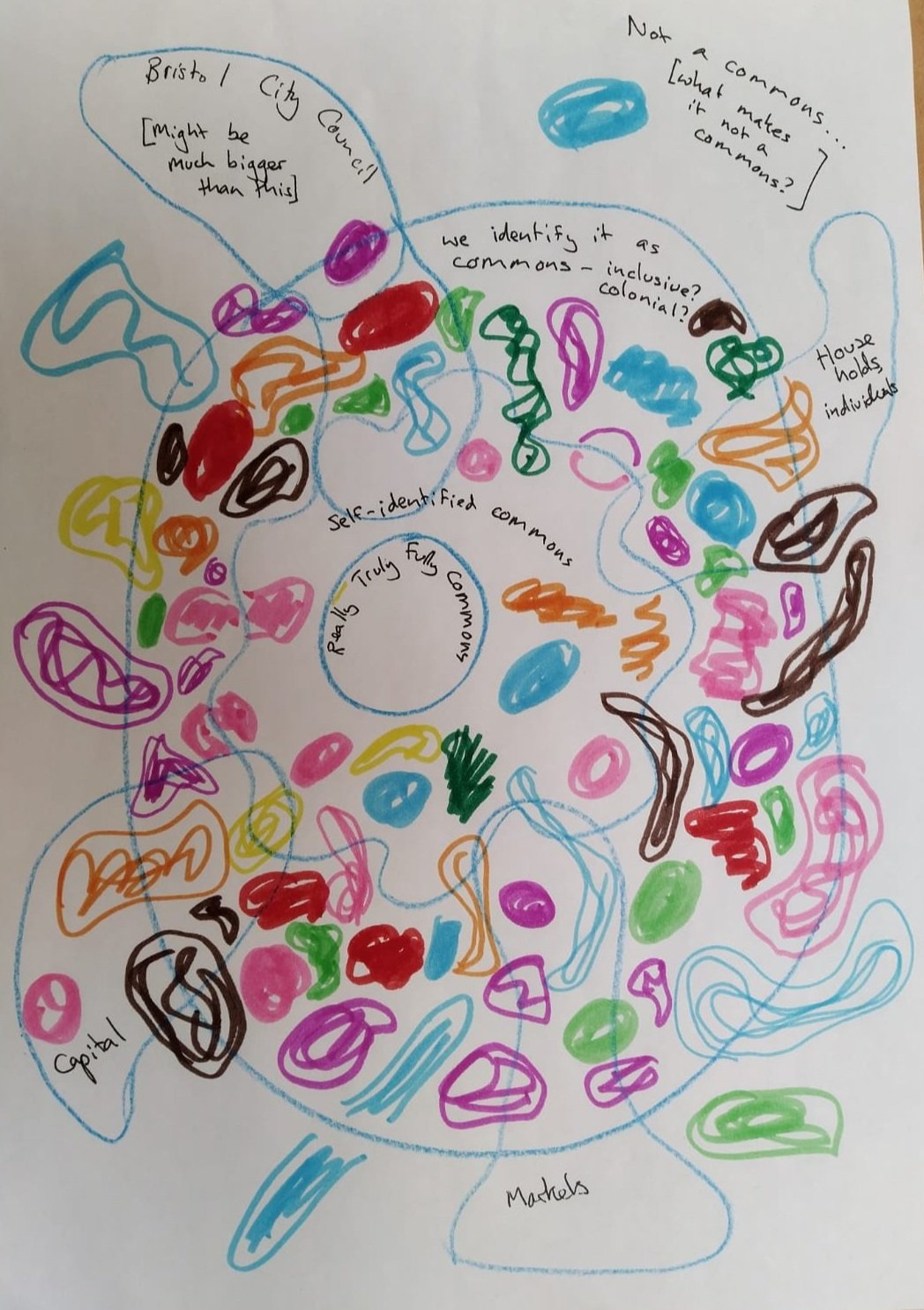Meaning-making task for the Bristol Commons and boundary creating
In the Bristol Commons, how do we know what to let in, and what stays outside?
This image is from a strategy working group session where Claudia invited us to draw the ecosystem of the commons of Bristol and our own position within it. My drawing has three categories of commons:
The platonic ideal of the commons, which is an empty category: nothing in reality meets this ideal in its fullness. The diagram shows it as the “really truly fully commons”.
The self-identified commons. Commoning groups of all kinds which have self-consciousness as such: which understand and label themselves as a commons. These are the groups who would seek membership of the Bristol Commons.
The commons that we, who ‘think like commoners’, can see all around us. An inclusive, expansive understanding of commons that casts a wide net and puts many things on the map. This is the mapping that tells a story of the wealth of the commons, makes new invitations at the edges, sees what is missing and is not yet self-aware. We must be careful not to colonially claim other people’s projects as belonging under our umbrella, but rather to create hospitable conditions and invite them in.
Finally, there is the category of “not a commons”. One of our intellectual tasks as the Bristol Commons will be to understand together the conditions for entry or exclusion. This is the semi-permeable membrane, the skin, that keeps the commons in and the not commons out. How do we know when it is in or out? How do we decide and discern with enough flexibility, generosity, safety, risk and consent?
Thanks Claudia Firth for facilitating a Bristol Commons strategy session where we were asked to draw the ecosystem of the commons of Bristol, and our own position within it.

